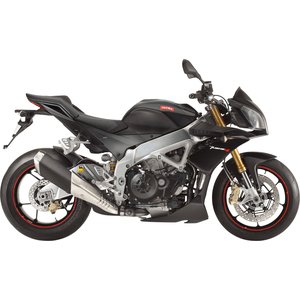Aprilia RSV Tuono 1000 (2011-2014): The Naked Superbike That Redefined Brutal Elegance
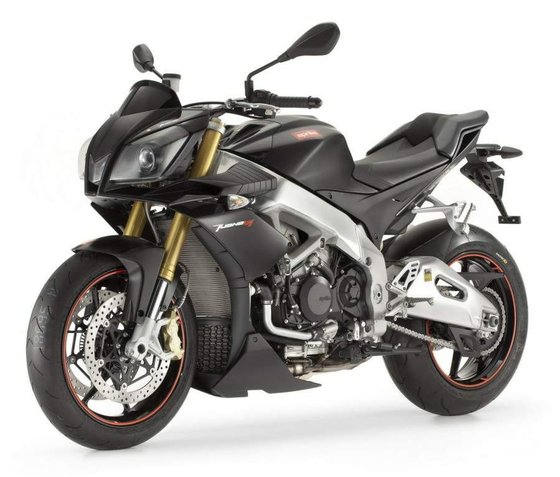
Introduction
When Aprilia unleashed the Tuono V4 R in 2011, it wasn’t just a motorcycle—it was a declaration of war on the notion that naked bikes couldn’t rival their fully-faired siblings. Derived directly from the championship-winning RSV4 superbike, the Tuono V4 R (and its APRC-equipped variants) redefined the hyper-naked segment with a blend of race-derived engineering, spine-tingling acoustics, and electronics that felt like they’d been teleported from MotoGP. Produced between 2011 and 2014, this generation of Tuono remains a benchmark for riders who crave unadulterated performance without the constraints of fairings. Let’s dissect why this Italian beast still commands respect.
Riding Experience: Taming the V4 Fury
The Thrill of Raw Power
Swing a leg over the Tuono’s 835–840 mm (32.9–33.1 in) seat, grip the wide handlebars, and you’re immediately aware this isn’t a docile streetfighter. The 999.6cc 65° V4 engine—tuned for street-friendly torque—delivers 167.3 HP @ 11,500 RPM and 111.5 Nm (82.2 lb-ft) @ 9,500 RPM. Unlike the RSV4, the Tuono’s powerband is fatter in the midrange, making it explosively responsive even at sane revs.
Twist the throttle in “Track” mode, and the front wheel levitates with cartoonish ease. Yet, the ride-by-wire system ensures smoothness in “Road” mode, perfect for wet commutes. The Sachs suspension—43 mm USD forks and a piggyback monoshock—strikes a rare balance between razor-sharp cornering and compliance over potholes.
Ergonomics: A Contradiction in Comfort
The Tuono’s riding position is a masterclass in aggression-meets-practicality. The tapered handlebars demand a slight forward lean, while the rearset pegs keep your knees tucked. At 183 kg (403 lbs) dry, it’s no featherweight, but the aluminum twin-spar frame centralizes mass beautifully. You’ll feel every gram vanish once the bike tips into a corner, aided by a 25° rake and 108 mm (4.2 in) trail.
The seat, though thinly padded, is surprisingly tolerable for a 200 km (124 mi) ride. Just don’t expect your passenger to agree—the pillion perch is an afterthought.
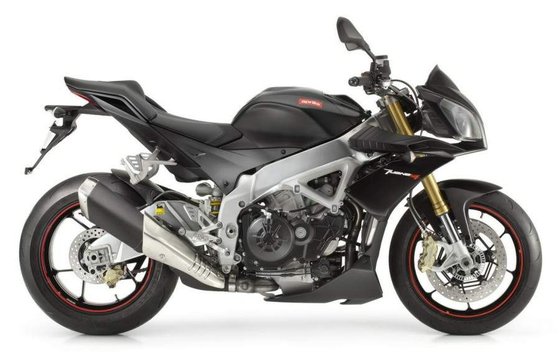
Design: Form Follows Function (and Fear)
Aesthetic Brutality
The Tuono’s design is unapologetically ferocious. The twin polyelliptical headlights glare like a predator’s eyes, while the minimalist flyscreen channels air to the rider. Brushed aluminum frame elements and a trellis swingarm scream mechanical authenticity. Color options—Competition Black, Sunlit Yellow, and Ice White—are bold but never garish.
Practical Touches
Despite its race DNA, the Tuono includes thoughtful details:
- 17L (4.5 gal) fuel tank: Enough for 200–250 km (124–155 mi) before refueling.
- Adjustable suspension: Fine-tune preload and damping for track days or highway slogs.
- Three-spoke wheels: Lighter than the RSV4’s five-spoke design, saving 2 kg (4.4 lbs).
Engine & Performance: The Heart of the Beast
V4 Engineering Marvel
The longitudinal 65° V4 isn’t just compact—it’s a symphony of Italian ingenuity. Key specs:
- Bore x Stroke: 78 x 52.3 mm (3.1 x 2.1 in)
- Compression Ratio: 13:1
- Cooling: Liquid-cooled with oil radiator
- Exhaust: 4-2-1 layout with catalytic converter and bypass valve
Shorter gear ratios (1st–3rd) amplify acceleration, while the slipper clutch ensures stability during aggressive downshifts. The engine’s vibrations are minimal, thanks to a countershaft that dampens the 65° V4’s inherent imbalance.
Fuel Efficiency? Who Cares?
At 8.07 L/100 km (29.15 mpg), the Tuono isn’t frugal. But when your right wrist controls 167 HP, fuel stops become opportunities to bask in the exhaust’s metallic snarl.
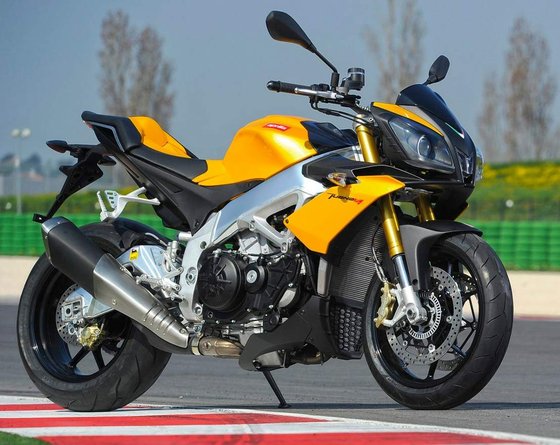
Electronics & Features: APRC Wizardry
The APRC (Aprilia Performance Ride Control) suite—standard on 2012–2014 models—transforms the Tuono into a tech flagship:
1. ATC (Traction Control): 8 levels adjust slip tolerance mid-corner.
2. AWC (Wheelie Control): Three settings to tame the front wheel’s antics.
3. ALC (Launch Control): For dragstrip-style starts (track use only, of course).
4. AQS (Quick Shifter): Clutchless upshifts so seamless they feel telepathic.
Three engine maps (Track, Sport, Road) modulate throttle response and power delivery. In “Road” mode, output drops to 125 HP, ideal for rain or novice riders.
Competition: How the Tuono Stacks Up
Ducati Streetfighter 848/1098
- Pros: Lighter, iconic L-twin character.
- Cons: Less tech (no wheelie control), peakier powerband.
KTM 1290 Super Duke R (2014)
- Pros: Nuclear torque (144 Nm), upright ergos.
- Cons: Less precise chassis, no launch control.
BMW S1000R
- Pros: 160 HP inline-four, optional Dynamic ESA.
- Cons: Sterile exhaust note, less tactile feedback.
Verdict: The Tuono’s V4 howl, APRC suite, and track-bred chassis give it an edge for riders prioritizing drama and adjustability.
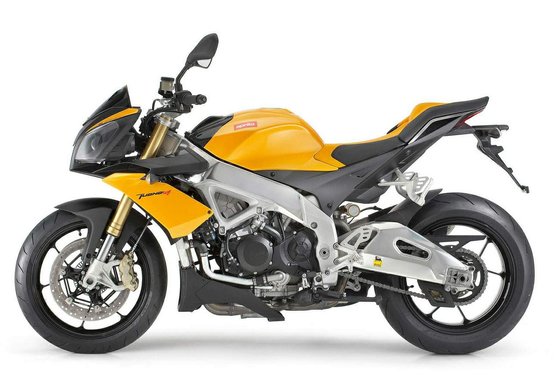
Maintenance: Keeping the Beast Alive
Key Considerations
- Oil Changes: Use 5W-40 synthetic every 6,000 km (3,728 mi). The wet-sump system holds 4L (1.06 gal).
- Valve Adjustments: Inspect every 20,000 km (12,427 mi). Intake: 0.10–0.15 mm (0.004–0.006 in); Exhaust: 0.20–0.25 mm (0.008–0.010 in).
- Chain Care: 110-link 520 chain requires regular lubrication. Upgrade to a DID Gold chain for longevity.
- Brakes: Replace Brembo sintered pads every 15,000 km (9,320 mi).
MOTOPARTS.store Upgrades
- Exhaust: Swap the stock can for an Akrapovič slip-on (3–5 HP gain).
- Comfort: Gel seat inserts reduce fatigue on long rides.
- Suspension: Öhlins cartridges for track-day addicts.
Conclusion: The Ultimate Adrenaline Delivery System
The 2011–2014 Aprilia Tuono V4 R isn’t just a motorcycle—it’s a gateway to unhinged euphoria. Few bikes merge track-day aggression with street practicality so masterfully. While rivals like the Super Duke or S1000R excel in specific areas, the Tuono’s V4 snarl, APRC tech, and razor-sharp handling make it a timeless icon.
Whether you’re carving alpine passes or dominating your local dragstrip, this Italian brute delivers a ride that’s as visceral as it is addictive. Just heed the old adage: “With great power comes great responsibility… and a few speeding tickets.”
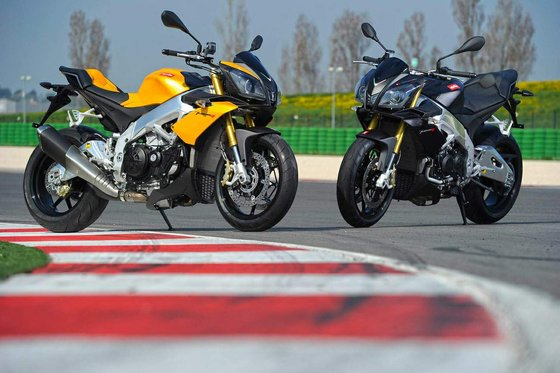
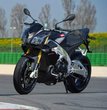







Specifications sheet
| Engine | |
|---|---|
| Stroke: | Four-stroke |
| Max power: | 122 kW | 164.0 hp |
| Max torque: | 112 Nm |
| Fuel system: | Ride-by-Wire with 4 Weber-Marelli 48mm throttle bodies |
| Max power @: | 11500 rpm |
| Displacement: | 999 ccm |
| Max torque @: | 9500 rpm |
| Bore x stroke: | 78.0 x 52.3 mm (3.1 x 2.1 in) |
| Configuration: | V |
| Cooling system: | Liquid |
| Compression ratio: | 13.0:1 |
| Lubrication system: | Wet sump with oil radiator and dual pumps |
| Number of cylinders: | 4 |
| Valves per cylinder: | 4 |
| Dimensions | |
|---|---|
| Wheelbase: | 1435 mm (56.8 in) |
| Dry weight: | 183 |
| Wet weight: | 212 |
| Seat height: | 835 mm (32.9 in) adjustable |
| Overall width: | 800 mm (31.5 in) |
| Overall height: | 1090 mm (42.9 in) |
| Overall length: | 2065 mm (81.3 in) |
| Ground clearance: | 125 mm (4.9 in) |
| Fuel tank capacity: | 18 L (4.8 US gal) |
| Drivetrain | |
|---|---|
| Final drive: | chain |
| Gear ratios: | ['1st: 2.600', '2nd: 2.063', '3rd: 1.700', '4th: 1.455', '5th: 1.308', '6th: 1.222'] |
| Chain length: | 110 |
| Transmission: | 6-speed cassette-type with slipper clutch |
| Rear sprocket: | 42 |
| Front sprocket: | 16 |
| Primary drive ratio: | 73/44 (1.659) |
| Electronics | |
|---|---|
| ABS: | Bosch 9MP 3-mode (APRC models) |
| Engine maps: | Track/Sport/Road |
| APRC features: | ['ATC (8-level traction control)', 'AWC (wheelie control)', 'ALC (launch control)', 'AQS (quickshifter)'] |
| Alternator output: | 450W |
| Maintenance | |
|---|---|
| Rear tire: | 190/55-z-17 |
| Engine oil: | 5W40 |
| Front tire: | 120/70-z-17 |
| Brake fluid: | DOT 4 |
| Spark plugs: | NGK CR9EKB or CR9EIX |
| Spark plug gap: | 0.7 |
| Coolant capacity: | 2.6 |
| Forks oil capacity: | 0.86 |
| Engine oil capacity: | 4.0 |
| Engine oil change interval: | Every 5000 km or 2 years |
| Valve clearance (intake, cold): | 0.10–0.15 mm |
| Valve clearance check interval: | 24,000 km / 15,000 mi |
| Valve clearance (exhaust, cold): | 0.20–0.25 mm |
| Recommended tire pressure (rear): | 2.5 bar (36 psi) solo / 2.8 bar (41 psi) with passenger |
| Recommended tire pressure (front): | 2.3 bar (33 psi) |
| Chassis and Suspension | |
|---|---|
| Rake: | 25.0° |
| Frame: | Aluminum dual-beam chassis with cast/pressed elements |
| Trail: | 106.6 mm (4.2 in) |
| Rear brakes: | Single 220mm disc, Brembo 2-piston floating caliper (ABS on APRC models) |
| Front brakes: | Dual 320mm floating discs, Brembo M432 radial 4-piston calipers (ABS on APRC models) |
| Rear suspension: | Sachs monoshock with APS linkage, fully adjustable |
| Front suspension: | 43mm Sachs USD fork, fully adjustable (preload, compression, rebound) |
| Rear wheel travel: | 130 mm (5.1 in) |
| Front wheel travel: | 120 mm (4.7 in) |



